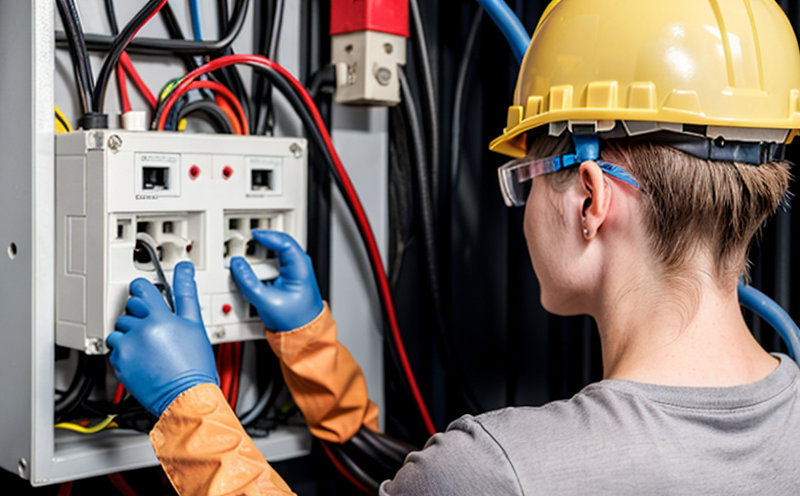IEC 61010 Safety Evaluation of IoT Laboratory Devices
The International Electrotechnical Commission (IEC) standard IEC 61010 provides a framework for ensuring the safety, accuracy, and reliability of electrical measuring instruments and associated equipment. In today's rapidly evolving smart home and Internet of Things (IoT) landscape, this standard is critical for validating the robustness and compliance of IoT laboratory devices with stringent safety requirements.
The IEC 61010 standard encompasses a wide range of tests that address electrical safety hazards such as overvoltage, overcurrent, and electromagnetic compatibility (EMC). For IoT devices, these tests are particularly pertinent to ensure the devices can operate safely in domestic environments without posing risks to users or causing harm to other connected devices. The standard covers not just individual components but also entire systems, making it essential for manufacturers of smart home products.
Our team specializes in providing comprehensive IEC 61010 safety evaluations tailored specifically for IoT laboratory devices. Our process begins with a detailed review of the device's design and intended use to identify potential hazards. This is followed by rigorous testing that includes but is not limited to voltage withstand tests, overcurrent protection checks, EMC assessments, and more.
The results of these evaluations provide manufacturers with critical insights into their product’s safety profile, helping them make necessary adjustments before the device reaches market. Compliance with IEC 61010 ensures that devices meet global regulatory standards, opening up access to international markets while also enhancing consumer confidence in the products.
Environmental and sustainability considerations are increasingly important in the development of IoT devices. By adhering to stringent safety protocols like those outlined in IEC 61010, we contribute to a safer home environment. Moreover, our testing process often involves identifying energy efficiency opportunities within devices, thereby supporting broader sustainability goals.
- Ensures compliance with global regulatory standards
- Identifies potential safety hazards early in the design phase
- Promotes safer use of IoT devices in domestic settings
- Supports the development of more reliable and durable products
Why It Matters
The safety evaluation process for IoT laboratory devices under IEC 61010 is crucial because it ensures that these devices are not only functional but also safe to use. In a world where connected devices play an integral role in our daily lives, any failure could lead to severe consequences ranging from minor inconveniences to life-threatening situations.
For manufacturers, compliance with this standard is essential for several reasons:
- Avoids the risk of product recalls and legal liabilities
- Promotes brand reputation by ensuring high-quality products
- Facilitates easier market access through regulatory approval
- Encourages continuous improvement in product design and functionality
For end-users, the importance of this evaluation cannot be overstated. It reassures them that their smart home devices are safe from electrical hazards such as short circuits or overheating. This peace of mind is especially valuable given the increasing complexity and interconnectedness of modern IoT ecosystems.
Environmental and Sustainability Contributions
Incorporating environmental sustainability into product development is a growing trend across various industries, including smart home technology. By ensuring that our IEC 61010 safety evaluations align with this ethos, we contribute positively to both the environment and society.
- Reduces the risk of accidental damage to devices from electrical hazards
- Minimizes waste by promoting longer-lasting products
- Promotes responsible resource use through efficient designs
- Encourages recycling and reuse practices for end-of-life products
The process of evaluating IoT devices under IEC 61010 also helps in identifying areas where energy consumption can be optimized, contributing to a more sustainable future. By reducing power usage without compromising on performance, we contribute to lower carbon footprints and reduced environmental impact.
Use Cases and Application Examples
The applications of IEC 61010 safety evaluation in IoT laboratory devices are diverse and span multiple sectors. Here are some key examples:
- Smart Thermostats: Ensuring that smart thermostats can withstand power surges without compromising on user safety.
- Security Cameras: Evaluating the robustness of security cameras against electromagnetic interference to maintain reliable video feeds.
- Air Quality Monitors: Checking air quality monitors for their ability to operate safely in environments with varying levels of electrical noise.
These evaluations are also crucial for ensuring the interoperability and reliability of IoT devices within smart home ecosystems. For instance, a smart thermostat that fails an IEC 61010 safety evaluation might not integrate seamlessly with other connected devices, leading to network instability or even complete system failure.





